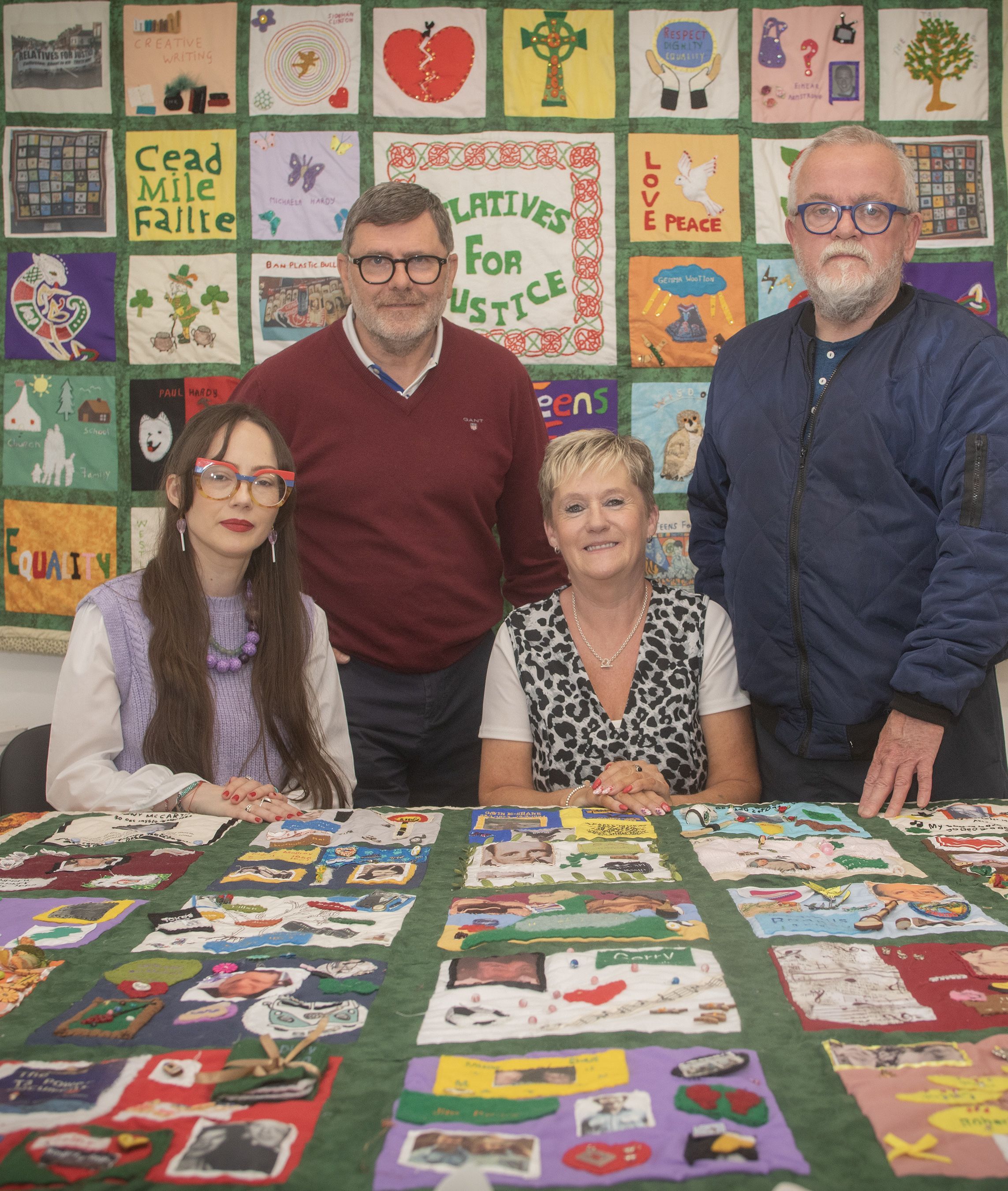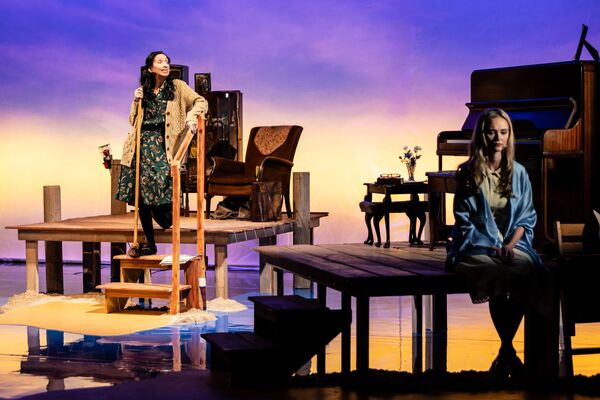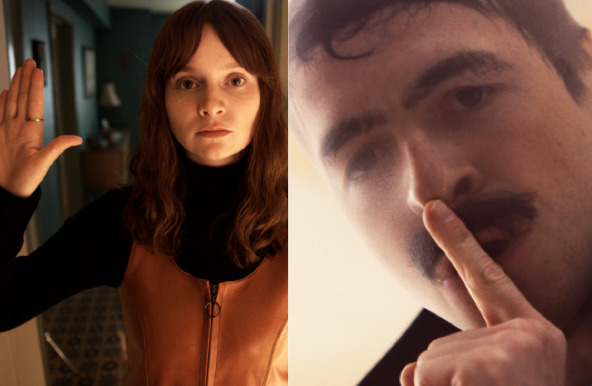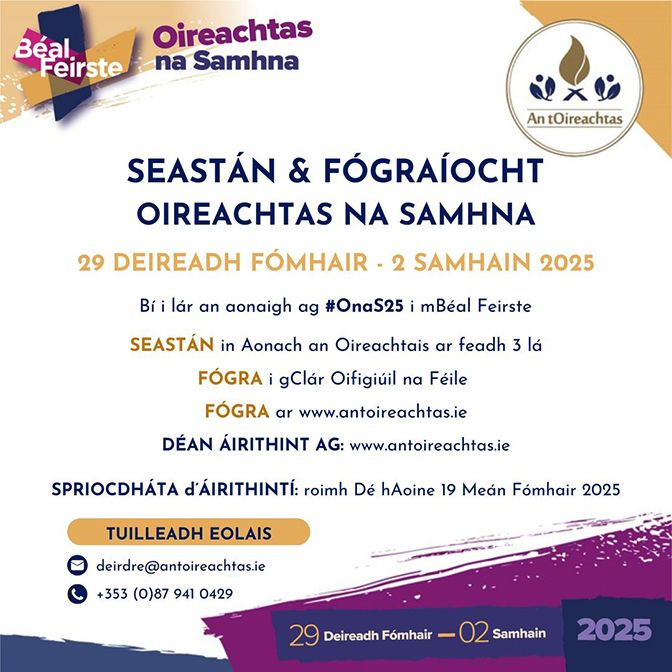RELATIVES For Justice have launched the eleventh panel of their Remembering Quilt.
Launched at Belfast City Hall, the quilt now contains 539 squares, each dedicated to a loved one who was killed during the conflict. First launched 25 years ago the quilt is a powerful symbol of remembrance of lives tragically cut short.
Mary Kate Quinn from Relatives for Justice (RFJ) says that this quilt consists of two sets of brothers – Cornelius McCrory and Patrick Pearse McCrory, as well as Ta Power and Jim Power.
“There is also a set of brother-in-laws – Thomas McElroy and Jimmy Gillen," she points out "and we have two women, and nine kids on this panel of the quilt who were under the age on 18."
“It’s a process that the families engage in and this panel has taken three years. There’s a lot of love that goes into each square and each square shows the legacy and the impact and the lives lived. The families come in and decide how they want to create their square and what they want to include. A lot of thought and love goes into each square.”
RFJ CEO Mark Thompson said it was back in 1999 that the victims’ group came up with the concept of the quilt.
“When we started this quilt it was in response to the exclusion of people predominantly from our community who had a particular experience of conflict,” he said. “So when the ceasefires were called and the political talks were happening and the negotiations and the Good Friday Agreement happened the war effectively ended but using victims and fighting a war through the prism of victims was an agenda of political unionism.
Brothers Cornelius and Patrick McCrory
“Then a window was erected in Belfast City Hall and it was primarily dedicated to Bloody Friday. The mayor talked about the innocent victims of terrorism and this window was for all the innocent victims, and also in City Hall they had a window to the UDR and a window dedicated to the British Army.”
Mark said that while these memorials were exclusive, RFJ and the families they represented wanted something that was inclusive to remember their loved ones. While visiting Washington DC in the 1980s Mark had seen the Aids Memorial Quilt and from discussions around that, he said “the idea for the quilt emerged”.
“The process is equally as important as the outcome,” he says, “because the process that people engage in here in making these squares and connecting with other families and finding solidarity, supporting empathy, and then other routes and pathways to other forms of supporter engagement with it. And it's about textile and touch and love."
Unlike the memorials in City Hall, the RFJ Remembering Quilt remains inclusive and there are people killed on all sides on the various panels.
“We launched the new panel in City Hall," he said. "We would have been excluded from City Hall back in the late ’90s and 2000s but the dynamics have completely changed. It’s our city too and we launched it there.”
The square dedicated to Peggy Whyte
One of the squares in the new quilt is dedicated to Peggy Whyte who died in a UVF bomb at her Ormeau home in 1984. Her son Jude, a well-known victims’ campaigner, said the process of making the square was “quite therapeutic”.
“How do you sum up someone’s life?” he says, looking at the patch that he sewed. “In many ways women of that generation were overwhelming 20 Benson and Hedges, Mass every day and getting your kids off to school and putting up with your husband. I found it very therapeutic. The one thing that I would say, I would long for the day when there is a quilt for everybody.
“When I was on the Victims’ Commission we put forward the idea that there should be a memorial for everyone, something similar to the one for the Titanic, and overwhelmingly people didn’t want an IRA volunteer on the same memorial to a member of the British Army.”
He said there is the equivalent of the RFJ Remembering Quilt in Markethill, County Armagh. “An impressive piece of marble of four or five hundred names of every soldier, UDR man, policeman, prison officer who was killed since 1942.
"The objective eventually, I suppose, is that we can remember our dead, all our dead, without acrimony and bitterness between each other.”
The square dedicated to Mark Rodgers
Caroline Rodgers, whose husband Mark Rodgers (28) was murdered in a loyalist attack at the Kennedy Way council depot in October 1993, included in her square the only photo she has of Mark with their two children, as well as a small cardigan belonging to her granddaughter who was born three months premature.
“The whole family contributed to the square,” she said. “It was really good for us deciding what to include and I enjoyed the process and even now I’m friends with other people who also took part.”
Mary Kate talks about the people who contributed to the quilt and have since passed away but were determined that their loved one would be remembered. The Remembering Quilt has been displayed in New York, Boston and San Francisco and around Ireland. RFJ have already begun the process of starting a twelfth panel.
Mark says that some day the quilt will end up in a museum for future generations to view and it will give them an insight into the lives of the people who died during the conflict and of the loved ones they left behind.
“Families get involved in this so their loved ones won’t be forgotten,” he said. “And if families feel that this is something appropriate for them, then they can contact Mary Kate.”







